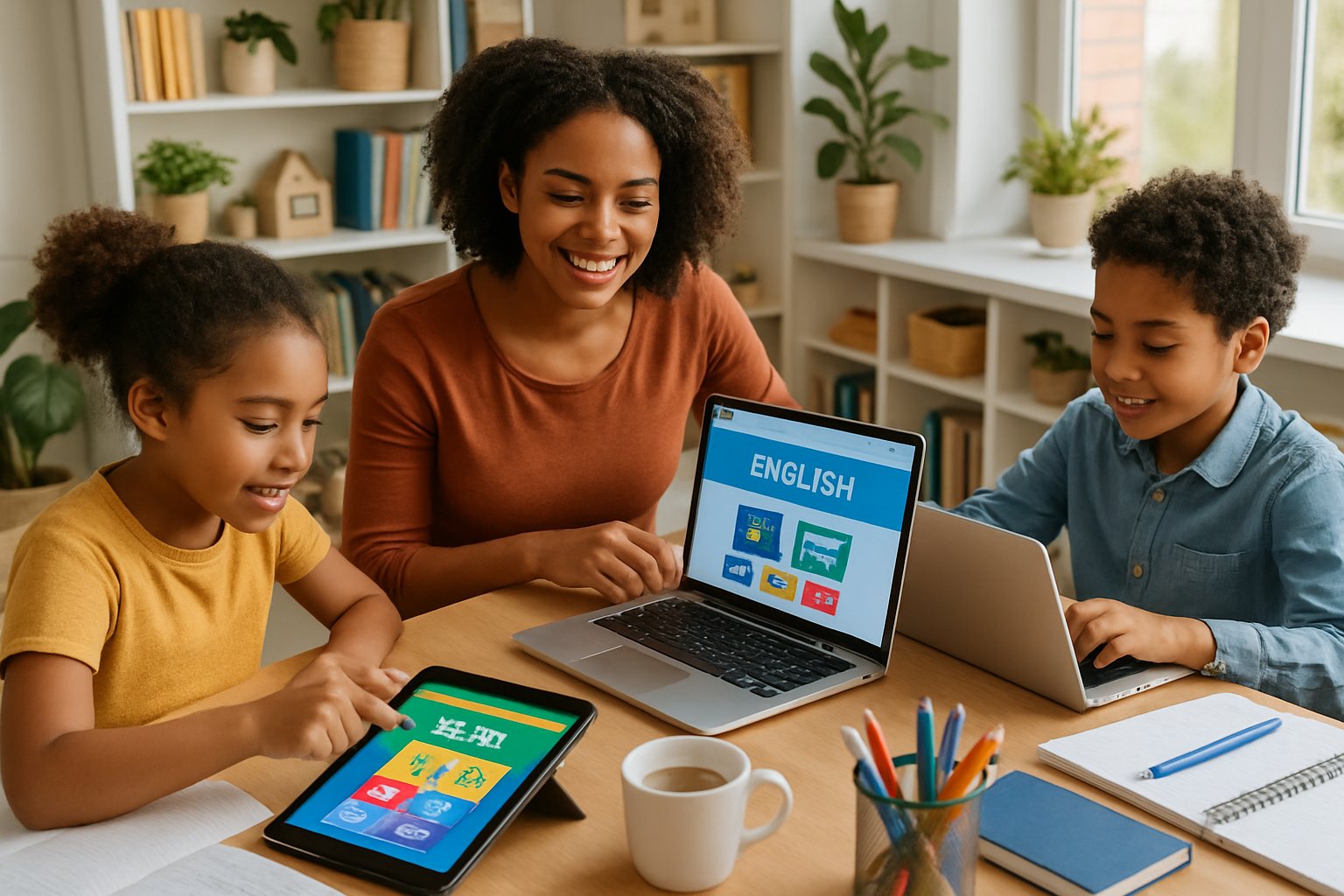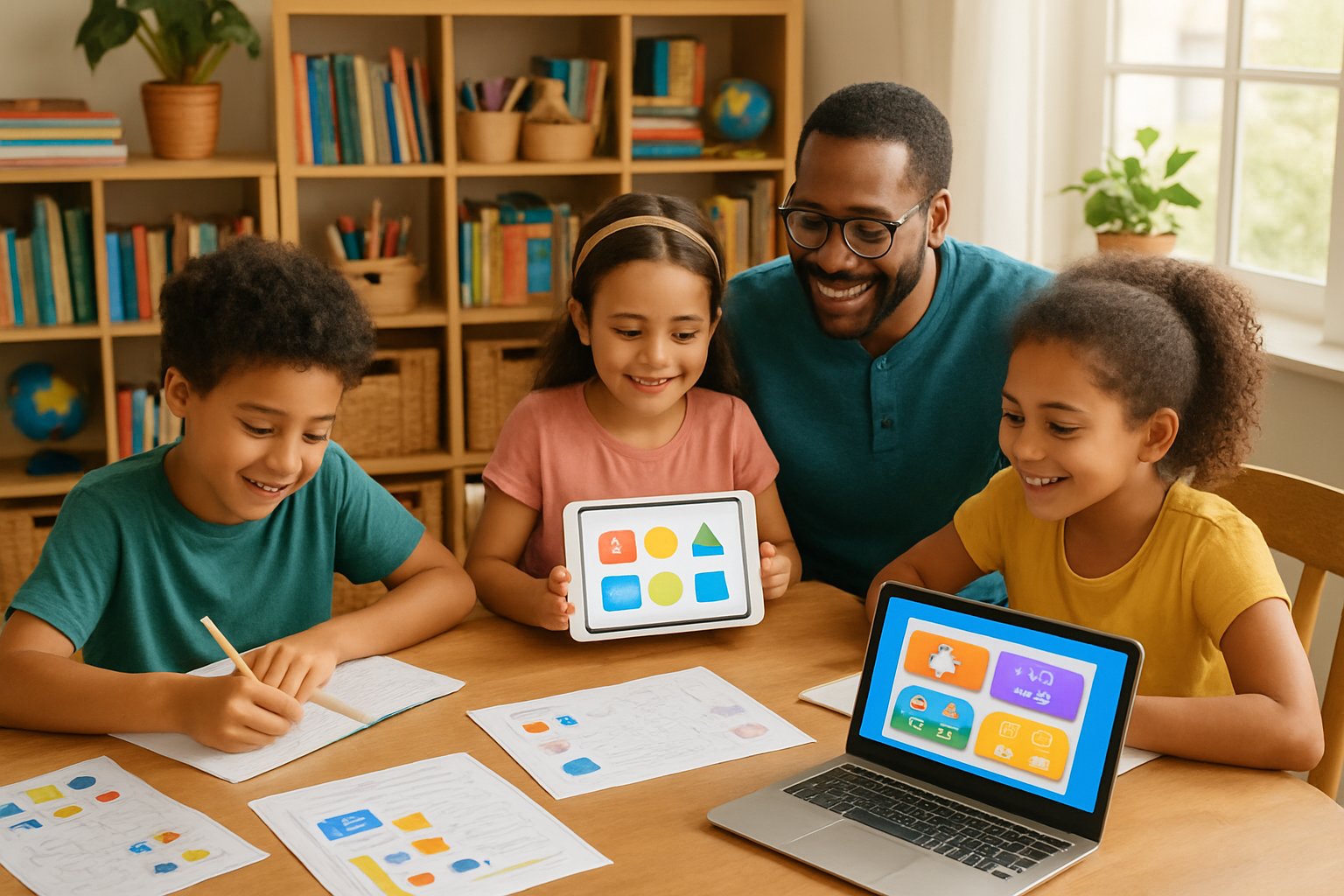Top Free Online Tools for Homeschooling Success

Families can use free digital platforms to build a complete homeschool curriculum, strengthen lessons, and track progress. These tools offer structured learning, flexible pacing, and engaging materials that support both students and parents.
Khan Academy: The Ultimate All-in-One Resource
Khan Academy provides a wide range of subjects for all grade levels, including math, science, history, and art. Its lessons use short videos, practice exercises, and quizzes to help students learn at their own pace. Parents can track progress through detailed dashboards.
The platform’s structured layout makes it simple to build daily routines. Students can review skills or move ahead when ready. It’s one of the most widely used free homeschooling resources because it combines quality lessons with flexibility.
Khan Academy also offers test prep for the SAT, ACT, and AP exams. This feature helps older students prepare for college without extra cost. Its nonprofit model ensures all content remains free and accessible worldwide.
CK-12 Foundation: Free Digital Textbooks and Practice
The CK-12 Foundation provides free digital textbooks, known as “FlexBooks,” that cover math, science, and social studies. These books include interactive videos, simulations, and practice questions. Students can explore topics in multiple formats, which supports different learning styles.
Teachers and parents can customize lessons to fit individual needs. This flexibility makes CK-12 a strong choice for building a personalized homeschool curriculum. The site also integrates with Google Classroom and other learning tools for easy management.
CK-12’s approach focuses on mastery learning. Students can repeat lessons until they fully understand a concept. The platform’s digital tools for enhancing homeschooling make it simple to combine reading, watching, and practicing in one place.
Easy Peasy All-in-One Homeschool: Complete Curriculum
Easy Peasy All-in-One Homeschool offers a full K–12 curriculum in subjects like reading, writing, math, and science. It’s completely free and designed for families who want a ready-to-use plan. Lessons are organized by grade and day, so parents can follow a clear schedule.
This program uses online materials, printable worksheets, and video links. It’s ideal for parents who prefer structured guidance instead of building lessons from scratch. The site also includes Bible study options for families seeking faith-based learning.
Because everything is online, it works well for families with limited budgets or multiple children. Many parents appreciate how this free online homeschool program keeps learning simple and organized.
Crash Course: Engaging Educational Videos
Crash Course creates short, animated videos that explain complex topics in a clear and entertaining way. Subjects include history, biology, literature, and economics. The videos use humor and visuals to keep students interested while still delivering solid educational content.
Each video series follows a structured path, making it easy to include in a homeschool curriculum. Students can watch a video, take notes, and discuss key points afterward. The style works especially well for visual learners and middle or high school students.
Crash Course’s free access through YouTube and its website makes it one of the most accessible homeschooling tools available. It’s a great way to reinforce lessons or introduce new topics in a fun, easy-to-understand way.
Essential Apps and Websites to Enhance Your Homeschool Routine

Families can improve homeschooling by using free digital tools that make learning more interactive and planning more organized. These apps and websites help students stay engaged while giving parents flexible ways to manage lessons and track progress.
Prodigy Math Game: Gamified Learning for Kids
Prodigy Math Game turns math practice into a fun adventure. Students solve math problems to cast spells, earn rewards, and move through fantasy worlds. It covers topics from early elementary to middle school and adapts to each learner’s skill level.
Parents like that Prodigy aligns with curriculum standards and offers both free and paid versions. The free version includes core lessons and progress tracking, making it a strong choice among free homeschooling resources.
Teachers and parents can view reports showing which skills need work. This helps guide lesson planning without extra grading. The game’s design keeps kids motivated, especially those who find traditional math drills dull.
Duolingo: Fun Language Lessons
Duolingo helps students learn new languages through short, game-like lessons. Learners earn points, unlock levels, and practice speaking, reading, and listening. The app supports dozens of languages, including Spanish, French, and Japanese.
Its free version is enough for most homeschoolers. Parents can track streaks and set daily goals to build consistent study habits. Duolingo’s voice recognition helps with pronunciation, which is useful for independent learners.
Homeschool families often use Duolingo to supplement foreign language lessons or to explore new cultures. As noted in educational app guides, its simple design and positive feedback make it one of the easiest tools for students to use on their own.
Epic! Books for Kids: Online Reading Library
Epic! Books for Kids gives students access to thousands of digital books, audiobooks, and learning videos. It’s especially helpful for early readers or reluctant readers who need more variety. The library includes fiction, nonfiction, and educational titles sorted by grade and reading level.
Parents can assign books or let children explore freely. Reading progress is tracked automatically, and quizzes check comprehension. The free educator plan offers many titles that fit well into homeschooling lessons.
Epic! works on tablets, laptops, and phones, so kids can read anywhere. Many families use it during quiet reading time or while traveling to keep learning consistent.
Google Sheets and Trello: Simple Homeschool Planners
Organizing lessons is easier with Google Sheets and Trello. Google Sheets helps parents create weekly schedules, track assignments, and record grades. Templates for homeschool planning are widely available and easy to customize.
Trello uses boards, lists, and cards to organize tasks visually. Each subject can have its own board. Parents can drag and drop lessons, attach files, and set due dates.
Both tools are free and cloud-based, making them accessible from any device. As mentioned in DreamClass’s list of homeschooling tools, combining these planners keeps homeschooling structured without needing expensive software.
Creative Extras and Enrichment Tools for Every Homeschool Family

Families can expand learning beyond textbooks using free online tools that make lessons more interactive and meaningful. These options help students explore geography, literature, and history in ways that encourage curiosity and independent thinking.
Virtual Field Trips: Explore the World from Home
Virtual field trips let homeschoolers explore museums, national parks, and cultural landmarks without leaving home. Sites like the Paths of Learning guide list free homeschooling resources that include interactive tours and videos for all grade levels.
Students can walk through the Smithsonian, visit the Great Wall of China, or dive into ocean habitats through live webcams. Many virtual trips include teacher guides and printable worksheets that make it easy to connect what students see with their current lessons.
Parents appreciate how these experiences build context for subjects like science, art, and geography. They also give learners with different styles—visual, auditory, or hands-on—an engaging way to absorb new information.
Tip: Create a simple travel log where children record what they “visited,” draw pictures, and write short reflections. This turns exploration into a creative writing exercise too.
Project Gutenberg: Free Classic Literature
Project Gutenberg offers thousands of free eBooks that support reading and language arts in homeschooling. The site hosts classic literature in the public domain, from Little Women to Treasure Island, all available in digital formats that work on computers, tablets, or e-readers.
Using these books helps families save money while providing access to timeless stories that build vocabulary and reading comprehension. Many parents pair these readings with writing prompts or discussion questions to help students think critically about themes and characters.
A simple table can help organize reading goals:
| Grade Level | Recommended Titles | Skills Focused |
|---|---|---|
| Upper Elementary | The Secret Garden | Vocabulary, empathy |
| Middle School | The Adventures of Tom Sawyer | Narrative analysis |
| High School | Pride and Prejudice | Literary devices, tone |
Library of Congress Kids & Families: History and Primary Sources
The Library of Congress Kids & Families site connects homeschoolers with primary sources, photos, and historical documents. Students can view old maps, listen to early recordings, or explore digital exhibits about American history.
These materials help learners see history as real stories told through letters, diaries, and photographs. Teachers and parents can build lessons around original artifacts, encouraging students to analyze evidence instead of memorizing facts.
Many activities include printable worksheets and educator tools that align with social studies standards. The site also features “Ask a Librarian,” where families can submit questions about history topics.
This resource turns history into a discovery process that supports critical thinking and research skills—valuable traits for lifelong learners.
Leave a Reply